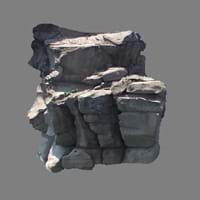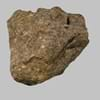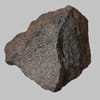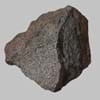Comendite and Lignite
Definition
Definition
Comendite is a hard, peralkaline igneous rock, a type of light blue grey rhyolite
Lignite is a soft brownish coal which shows traces of plants and is intermediate between bituminous coal and peat
History
Origin
Italy
France
Discoverer
Unknown
Unknown
Etymology
Comendite derives its name from the area of Le Commende on San Pietro Island in Italy
From French, Latin lignum wood + -ite1
Class
Igneous Rocks
Sedimentary Rocks
Sub-Class
Durable Rock, Hard Rock
Durable Rock, Soft Rock
Family
Group
Volcanic
Not Applicable
Other Categories
Medium Grained Rock, Opaque Rock
Coarse Grained Rock, Fine Grained Rock, Medium Grained Rock, Opaque Rock
Texture
Texture
Porphyritic
Amorphous, Glassy
Color
Blue, Bluish - Grey
Black, Brown, Dark Brown, Grey, Light to Dark Grey
Maintenance
Less
Less
Durability
Durable
Durable
Water Resistant
Yes
No
Scratch Resistant
Yes
No
Stain Resistant
Yes
No
Wind Resistant
Yes
No
Acid Resistant
Yes
No
Appearance
Foliated
Veined or Pebbled
Uses
Architecture
Interior Uses
Countertops, Decorative Aggregates, Interior Decoration
Not Yet Used
Exterior Uses
As Building Stone, As Facing Stone, Garden Decoration
Not Yet Used
Other Architectural Uses
Curbing
Not Yet Used
Industry
Construction Industry
Building houses or walls, Cement Manufacture, Construction Aggregate, for Road Aggregate, Landscaping, Making natural cement, Raw material for the manufacture of mortar
for Road Aggregate, Steel Production
Medical Industry
Not Yet Used
Not Yet Used
Antiquity Uses
Artifacts
Not Yet Used
Other Uses
Commercial Uses
Cemetery Markers
Electricity Generation
Types
Types
Rhyolite
Xyloid Lignite or Fossil Wood and Compact Lignite or Perfect Lignite
Features
Very fine grained rock, It is One of the Oldest, Strongest and Hardest Rock
Generally rough to touch, Helps in production of Heat and Electricity, Used as fossil fuel
Archaeological Significance
Monuments
Not Yet Used
Not Yet Used
Famous Monuments
Not Applicable
Not Applicable
Sculpture
Not Yet Used
Not Yet Used
Famous Sculptures
Not Applicable
Not Applicable
Pictographs
Not Used
Used
Petroglyphs
Not Used
Used
Figurines
Not Yet Used
Not Yet Used
Fossils
Absent
Present
Formation
Formation
Comendite is a type of Igneous rock which is formed due to cooling and solidification of lava or magma. It may form with or without crystallization, either below the surface as intrusive rocks or on the surface as extrusive rocks.
Coal formation takes place due to accumulation of plant debris in a swamp environment. The Coal formation process continues, as peat turns into lignite brown or black coal at increasing heat and pressure.
Composition
Mineral Content
Albite, Amphibole, Quartz
Not Available
Compound Content
Al, Fe, Potassium Oxide
Carbon, Hydrogen, Nitrogen, Oxygen, Sulphur
Transformation
Metamorphism
Yes
No
Types of Metamorphism
Cataclastic Metamorphism, Regional Metamorphism
Not Applicable
Weathering
Yes
Yes
Types of Weathering
Biological Weathering, Chemical Weathering, Mechanical Weathering
Biological Weathering, Chemical Weathering, Mechanical Weathering
Erosion
Yes
Yes
Types of Erosion
Coastal Erosion, Water Erosion
Chemical Erosion, Water Erosion, Wind Erosion
Properties
Physical Properties
Hardness
6-7
1
Grain Size
Medium Grained
Medium to Fine Coarse Grained
Fracture
Pervasive
Conchoidal
Streak
Bluish Black
Black
Porosity
Highly Porous
Highly Porous
Luster
Dull
Dull to Vitreous to Submetallic
Compressive Strength
92.40 N/mm2
21
Not Available
Cleavage
Not Available
Non-Existent
Toughness
2
Not Available
Specific Gravity
2.38
1.1-1.4
Transparency
Opaque
Opaque
Density
Not Available
800-801 g/cm3
Thermal Properties
Specific Heat Capacity
Not Available
1.26 kJ/Kg K
5
Resistance
Heat Resistant, Impact Resistant
Heat Resistant
Reserves
Deposits in Eastern Continents
Asia
China
Bangladesh, Burma, Cambodia, China, India, Indonesia, Kazakhstan, Malaysia, Mongolia, Pakistan, Turkey, Vietnam
Africa
East Africa
Botswana, Kenya, Morocco, Mozambique, South Africa, Tanzania
Europe
Italy
Belgium, Bulgaria, England, France, Germany, Greece, Hungary, Kosovo, Netherlands, Norway, Poland, Romania, Serbia, Slovakia, Slovenia, The Czech Republic, Ukraine, United Kingdom
Others
Not Yet Found
Not Yet Found
Deposits in Western Continents
North America
Not Yet Found
Canada, Mexico, USA
South America
Not Yet Found
Brazil, Chile, Colombia, Venezuela
Deposits in Oceania Continent
Australia
Queensland
New South Wales, Queensland, Victoria
All about Comendite and Lignite Properties
Know all about Comendite and Lignite properties here. All properties of rocks are important as they define the type of rock and its application. Comendite belongs to Igneous Rocks while Lignite belongs to Sedimentary Rocks.Texture of Comendite is Porphyritic whereas that of Lignite is Amorphous, Glassy. Comendite appears Foliated and Lignite appears Veined or Pebbled. The luster of Comendite is dull while that of Lignite is dull to vitreous to submetallic. Comendite is available in blue, bluish - grey colors whereas Lignite is available in black, brown, dark brown, grey, light to dark grey colors. The commercial uses of Comendite are cemetery markers and that of Lignite are electricity generation.
|
||
|
||
|










